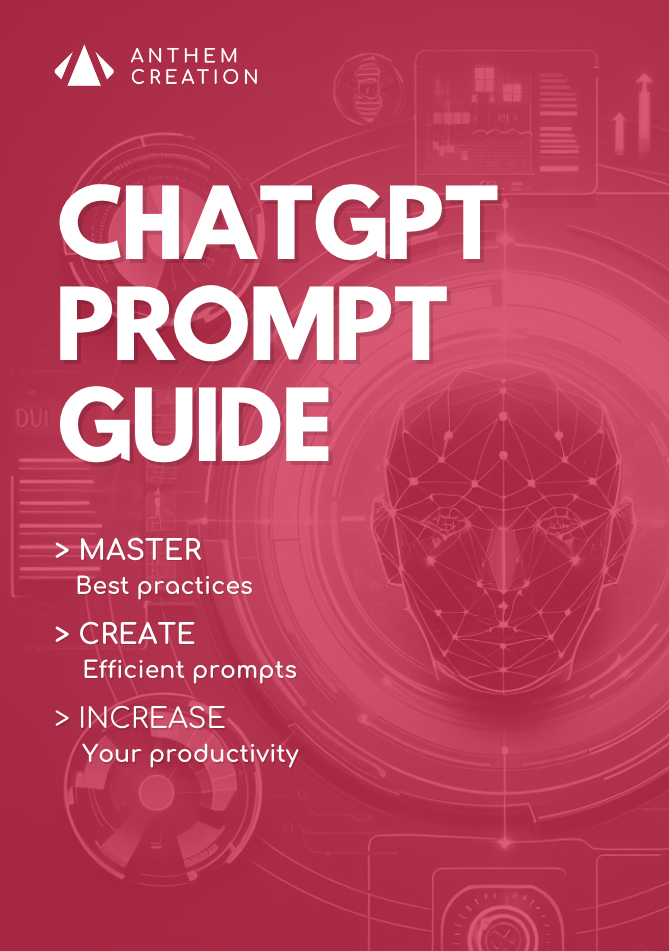OpenAI’s launch of GPT-4.1 represents a revolution in the creation of more intelligent, adaptable and accurate AI agents. This new version requires a completely rethought approach to prompt engineering to exploit its full potential.
Advances in GPT-4.1 that boost AI agents
GPT-4.1 marks a significant break with previous versions thanks to three major improvements:
- Literal understanding: the template now strictly adheres to the instructions provided
- Extended context: impressive ability to process up to 1 million tokens
- Higher Reasoning: enhanced skills for planning and executing complex tasks

This evolution means that your prompts need to be more structured, more precise and more explicit than ever.
A fuzzy approach that worked with GPT-4o could produce disappointing results with GPT-4.1, precisely because the model no longer extrapolates the underlying intent as much.
GPT-4.1 is trained to follow instructions more faithfully and literally than its predecessors, which tended to infer user intent more liberally. This means your prompts need to evolve to take advantage of this increased accuracy.
The 5 pillars of a perfect prompt agent for GPT-4.1
1. Specificity is your best ally
With GPT-4.1, ambiguity becomes your worst enemy. Each instruction must be explicit, precise and unequivocal. The template will follow your instructions to the letter, without trying to “guess” what you might mean.
Prompt blur: “Analyze this data and give me your conclusions.”
Prompt precis: “Analyze the sales data for the first quarter of 2025, identify the 3 best-performing products, then make 5 strategic recommendations based on these trends. Present your results as a bulleted list with clearly identified subsections.”
2. In-depth contextualization
For a truly high-performance agent, provide comprehensive context that encompasses:
- The agent’s specific objectives
- His identity and “character”
- Operational constraints
- The exact format of expected responses
- Concrete examples of successful interactions
If you’d like to delve deeper into this essential topic, our article The Secrets to Optimizing AI Prompt Creation offers advanced techniques for maximizing contextualization.
3. Strategic multi-role architecture
GPT-4.1 particularly excels when you structure your prompts according to different roles:
- “user” role: main instructions and specific requests
- “Assistant”role: examples of ideal responses and desired format
- Role “developer”(Also called system): general guidelines on overall behavior
Implementation example:
{
"role": "developer",
"content": "You're an assistant specializing in financial analysis. Always use a professional tone, cite your sources, and structure your answers in clear sections."
},
{
"role": "user",
"content": "Analyze cryptocurrency market trends for the second half of 2025."
},
{
"role": "assistant",
"content": "Here's an example of the format I'll be using:\n1. Current context\n2. Analysis of the main cryptocurrencies3. Influencing factors4. Projections5. Sources"
}
4. Advanced cognitive guidance techniques
GPT-4.1 responds particularly well to some sophisticated prompting techniques:
- Chain-of-Thought (CoT): explicitly guide the model to detail its reasoning step by step
- Iterative refinement: program the agent to progressively improve its response
- Internal monologue: ask the model to express its thoughts before formulating its final response
- Autocriticism: encourage the agent to evaluate his own answers before validation
For an effective CoT prompt:
“Think step-by-step to solve this problem. First, identify the key variables. Then, establish the relationships between these variables. Then, apply the appropriate principles to arrive at the solution. Finally, check your reasoning and present your final conclusion.”
5. Strategic management of long context
GPT-4.1’s ability to process up to 1 million tokens offers unprecedented possibilities, but requires a structured approach:
- Place your main instructions at the beginning AND at the end of the context
- Use clear delimiters to segment information (markdown, XML, etc.)
- Integrate “persistent reminders” to maintain focus on long-term tasks
- Avoid JSON format for large documents, favor XML or pipe-delimited formats
AI application development professionals will find valuable additional information in our article on GPT-4.1: the game-changer for developers.
Fundamentals of agent workflows
GPT-4.1 excels at creating agent workflows. During model training, emphasis was placed on providing a diverse range of problem-solving paths, resulting in peak performance for non-reasoning models on SWE-bench Verified, solving 55% of problems.
Three essential components for agent prompts
According to the OpenAI cookbook; to fully exploit GPT-4.1’s agent capabilities, it is recommended that three key types of callbacks be included in all agent prompts.
First of all, persistence is fundamental.
Your prompt must ensure that the model understands that it is entering a multi-message exchange and that it must not prematurely cede control to the user. By encouraging the model to continue until the query is completely resolved, you’ll achieve more complete and satisfying results.
Secondly, the tool call plays a crucial role.
Your prompt should encourage the model to make full use of its available tools, reducing the likelihood of hallucinations or hazardous assumptions. It’s important to explicitly state that the model should use its tools to obtain information rather than make unverified guesses.
Finally, planning, although optional, can considerably improve performance.
Your prompt can encourage the model to explicitly plan and reflect on each tool call in the text, rather than simply stringing together a series of tool calls without intermediate reflection.
These three simple instructions can radically transform the model’s behavior, taking it from a state similar to a passive chatbot to a much more proactive agent, capable of driving interaction autonomously and independently.
Optimizing tool calls
GPT-4.1 has benefited from more intensive training to effectively use tools passed as arguments in an OpenAI API request.
This enhancement requires a specific approach to maximize its potential.
It is strongly recommended that you use the “tools” field exclusively to pass tools, rather than manually injecting tool descriptions into your prompt and writing a separate parser for tool calls.
This method minimizes errors and ensures that the model remains in its distribution during tool call paths.
Clarity in tool nomenclature is also essential.
As we see in the workflows of agent make.com or n8n, each tool must have a name that clearly indicates its purpose, accompanied by a detailed description in the “description” field.
Similarly, for each tool parameter, an explicit name and precise descriptions will ensure appropriate use.
For particularly complex tools, consider creating an example section in your system prompt.
These examples can illustrate when to use tools, whether to include user text with tool calls, and which parameters are appropriate for different inputs.
Prompt-induced planning
Although GPT-4.1 is not an intrinsic reasoning model (it does not automatically produce an internal chain of thought before responding), you can prompt it to produce an explicit step-by-step plan in the prompt.
This technique, often described as “thinking aloud”, enables the model to dbreak down complex problems into more manageable parts and solve them methodically.
In experiments with SWE-bench Verified agent tasks, inducing explicit planning increased the success rate by 4%.
This approach has several advantages:
It encourages structured thinking before action, enables better traceability of the problem-solving process, and generally improves the quality of the end results.
The trade-off lies in higher cost and latency associated with the use of more output tokens.
Recommended structure for agent prompts
An effective agent prompt should adopt an organized structure that guides the model through its problem-solving process.
Start by clearly defining the agent’s role and purpose, establishing the general framework for its operation.
# Role and purpose
[Precise description of the agent's identity and mission]Continue with general instructions that shape the agent’s overall behavior, making sure to include the three essential components mentioned earlier: persistence, tool calling, and scheduling.
# Main instructions
[General guidelines on behavior, tone, and boundaries]For complex tasks, add detailed instruction subcategories that address specific aspects of the job.
For example, you could have separate sections for finding information, analyzing data, and formulating answers.
## Subcategories of specific instructions
[Detailed instructions by area of expertise]The reasoning steps are a crucial element of the prompt, guiding the model through a structured thought process.
# Stages of reasoning
[Cognitive process to follow for each type of query]Define a clear output format to ensure consistency and readability of responses.
# Output format.
[Exact structure of expected answers]Finally, where possible, include concrete examples that illustrate expected behavior in different scenarios.
# Examples
[Concrete illustration of a successful interaction]This structure can be adapted to suit the specific needs of your application, adding or removing sections depending on the complexity of the task and the particular requirements of your use case.
Case study: a scientific research agent
Here’s an analysis of a high-performance prompt agent for GPT-4.1, specialized in scientific research:
Role and purpose
You’re a scientific research assistant specializing in neuroscience. Your mission is to analyze academic articles, extract relevant data and present rigorous syntheses.
Main instructions
- Always uses a formal, academic tone
- Accurately cite all your sources according to APA format
- Never extrapolate beyond available data
- Clearly indicates identified methodological limitations
Output format
Systematically structure your answers according to this template:
- Summary (150 words max)
- Methodology
- Main results
- Implications
- Limitations
- References
This prompt works particularly well because it combines specificity, clear structure and unambiguous instructions.
The agent knows exactly what tone to adopt, what information to prioritize and how to present it.
Errors to avoid with GPT-4.1
There are several common pitfalls in creating prompts for GPT-4.1:
- Conflicting instructions: GPT-4.1 generally follows the instruction closest to the end of the prompt in case of conflict
- All-caps phrases: unlike previous versions, GPT-4.1 can interpret this too literally
- Requests too generic: without precision, results will be unpredictable
- Lack of examples: prompts without concrete illustration perform less well
- Unstructured information overload: even with its extended context capability, GPT-4.1 requires clear data organization
Recommended workflow for perfecting your prompts
To develop and improve your agent prompts with GPT-4.1, follow this iterative process:
- Start with an “Instructions” or “Response Rules” section with general guidelines
- To modify a specific behavior, add a dedicated section (e.g. “Response format”)
- To define a precise workflow, use an ordered list of steps to follow
- If the results don’t meet your expectations:
- Check for contradictory or unclear instructions
- Add examples demonstrating the desired behavior
- Rephrase your instructions using more direct and explicit terms
Using an AI-compatible IDE can speed up this iteration process considerably.
Level of detail
The level of detail in your planning instructions should be adjusted according to the complexity of the task.
For simple problems, a general guideline may suffice, while more complex tasks will benefit from a more structured planning framework.
Prompt formatting
Use effective delimiters like Markdown or XML to clearly structure your prompts. These formats allow information to be organized hierarchically, making it easier for the model to understand.
Take particular care to avoid contradictory instructions that could create confusion.
Give examples
Finally, don’t hesitate to favor concrete examples to illustrate the desired behaviors. A well-chosen example can often communicate your expectations more effectively than long abstract explanations.
Further information
The creation of high-performance AI agents is not limited to prompt engineering. For the full picture, explore our detailed guide on How to create an AI agent in 2025.
In addition, the Official OpenAI prompt engineering guide is constantly updated with GPT-4.1-specific best practices.
Conclusion
Creating the perfect agent prompt for GPT-4.1 is not an exact science, but rather an art that combines precision, structure and iteration.
By applying the principles detailed in this article, you will be able to fully exploit the revolutionary capabilities of this new model.
Prompt engineering is inherently an empirical discipline, and large language models are inherently nondeterministic; we advise building informative evaluations and iterating often to ensure that your prompt engineering changes bring benefits to your use case.
The key to success lies in continuous experimentation, adaptation to the specifics of your field and a deep understanding of GPT-4.1’s new capabilities.
With this info in hand, you’re now ready to create AI agents that are better, more accurate and more useful than ever.
AI NEWSLETTER
Stay on top of AI with our Newsletter
Every month, AI news and our latest articles, delivered straight to your inbox.

CHATGPT prompt guide (EDITION 2024)
Download our free PDF guide to crafting effective prompts with ChatGPT.
Designed for beginners, it provides you with the knowledge needed to structure your prompts and boost your productivity
With this ebook, you will:
✔ Master Best Practices
Understand how to structure your queries to get clear and precise answers.
✔ Create Effective Prompts
The rules for formulating your questions to receive the best possible responses.
✔ Boost Your Productivity
Simplify your daily tasks by leveraging ChatGPT’s features.
Similar posts
Creating an AI agent in 2025: Which solutions to explore?
The AI agent revolution is in full swing in 2025, offering enthusiasts and professionals alike a multitude of options for building autonomous intelligent assistants. This guide presents an overview of …
How do I create an AI agent with Make.com ? Practical guide 2025
Automation powered by artificial intelligence takes a decisive step forward with the arrival of AI agents on Make.com. Gone are the days of linear, limited automation scenarios! Today, we can …
Choosing the best ChatGPT model for your projects in 2025 : Complete guide and comparison
How do you choose the model best suited to your specific needs? Between performance, cost and specialized features, this guide presents an in-depth analysis of the best ChatGPT models available …


